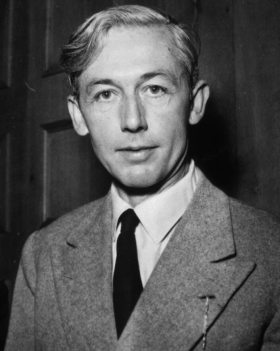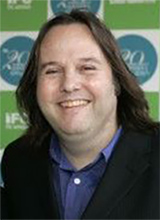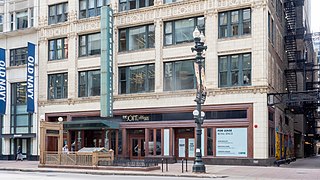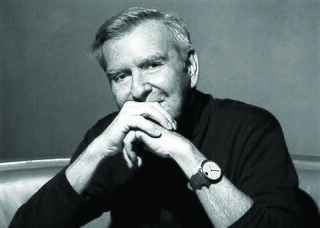
Werner Herzog is a German film director, screenwriter, author, actor, and opera director, regarded as a pioneer of New German Cinema. His films often feature ambitious protagonists with impossible dreams, people with unusual talents in obscure fields, or individuals in conflict with nature. His filmmaking process includes disregarding storyboards, emphasizing improvisation, and placing the cast and crew into similar situations to characters in his films.

Jean-Luc Godard was a Franco-Swiss film director, screenwriter, and film critic. He rose to prominence as a pioneer of the French New Wave film movement of the 1960s, alongside such filmmakers as François Truffaut, Agnès Varda, Éric Rohmer and Jacques Demy. He was arguably the most influential French filmmaker of the post-war era. According to AllMovie, his work "revolutionized the motion picture form" through its experimentation with narrative, continuity, sound, and camerawork. His most acclaimed films include Breathless (1960), Vivre sa vie (1962), Contempt (1963), Band of Outsiders (1964), Alphaville (1965), Pierrot le Fou (1965), Masculin Féminin (1966), Weekend (1967) and Goodbye to Language (2014).
David Holzman's Diary is a 1967 American mockumentary, or work of metacinema, directed by James McBride and starring L. M. Kit Carson. A feature-length film made on a tiny budget over several days, it is a work of experimental fiction presented as an autobiographical documentary. "A self-portrait by a fictional character in a real place—New York's Upper West Side," the film comments on the title character's personality and life as well as on documentary filmmaking and the medium of cinema more generally. In 1991, David Holzman's Diary was included in the annual selection of 25 motion pictures added to the National Film Registry of the Library of Congress, being deemed "culturally, historically, or aesthetically significant" and recommended for preservation.

Robert Bresson was a French film director. Known for his ascetic approach, Bresson contributed notably to the art of cinema; his non-professional actors, ellipses, and sparse use of scoring have led his works to be regarded as preeminent examples of minimalist film. Much of his work is known for being tragic in story and nature.

James Stanley Brakhage was an American filmmaker. He is considered to be one of the most important figures in 20th-century experimental film.
Cinéma vérité is a style of documentary filmmaking developed by Edgar Morin and Jean Rouch, inspired by Dziga Vertov's theory about Kino-Pravda. It combines improvisation with use of the camera to unveil truth or highlight subjects hidden behind reality. It is sometimes called observational cinema, if understood as pure direct cinema: mainly without a narrator's voice-over. There are subtle, yet important, differences between terms expressing similar concepts. Direct cinema is largely concerned with the recording of events in which the subject and audience become unaware of the camera's presence: operating within what Bill Nichols, an American historian and theoretician of documentary film, calls the "observational mode", a fly on the wall. Many therefore see a paradox in drawing attention away from the presence of the camera and simultaneously interfering in the reality it registers when attempting to discover a cinematic truth.

Hoop Dreams is a 1994 American documentary film directed by Steve James, and produced by Frederick Marx, James, and Peter Gilbert, with Kartemquin Films. It follows the story of two African-American high school students, William Gates and Arthur Agee, in Chicago and their dream of becoming professional basketball players.

An art film, art cinema, or arthouse film, is typically an independent film, aimed at a niche market rather than a mass market audience. It is "intended to be a serious, artistic work, often experimental and not designed for mass appeal", "made primarily for aesthetic reasons rather than commercial profit", and containing "unconventional or highly symbolic content".

Scenes from a Marriage is a 1973 Swedish television miniseries written and directed by Ingmar Bergman. Over the course of six hour-long episodes, it explores the disintegration of the marriage between Marianne, a divorce lawyer, and Johan, a psychology professor. The series spans a period of 10 years. Bergman's teleplay draws on his own experiences, including his relationship with Ullmann. It was shot on a small budget in Stockholm and Fårö in 1972.
Emanuel Farber was an American painter, film critic and writer. Often described as "iconoclastic", Farber developed a distinctive prose style and set of theoretical stances which have had a large influence on later generations of film critics and influence on underground culture. Susan Sontag considered him to be "the liveliest, smartest, most original film critic this country has ever produced."

Shirley Clarke was an American filmmaker.

Bruce Sinofsky was an American documentary film director, particularly known for his films the Paradise Lost trilogy, Brother's Keeper and Metallica: Some Kind of Monster, all created with Joe Berlinger.

Full Moon High is a 1981 American comedy horror film written and directed by Larry Cohen. The film stars Adam Arkin, Ed McMahon and Roz Kelly.

Shaky camera, shaky cam, jerky camera, queasy cam, run-and-gun or free camera is a cinematographic technique where stable-image techniques are purposely dispensed with shaking. It is a hand-held camera, or given the appearance of being hand-held, and in many cases shots are limited to what one photographer could have accomplished with one camera. Shaky cam is often employed to give a film sequence an ad hoc, electronic news-gathering, or documentary film feel. It suggests unprepared, unrehearsed filming of reality, and can provide a sense of dynamics, immersion, instability or nervousness. The technique can be used to give a pseudo-documentary or cinéma vérité appearance to a film.

The Gene Siskel Film Center, formerly The Film Center of the School of the Art Institute of Chicago and commonly referred to as The Film Center or The Gene Siskel, is the cinematheque attached to The School of the Art Institute of Chicago. It is named after popular film critic Gene Siskel.

Michael Kutza is a filmmaker, a graphic designer and the founder of the Chicago International Film Festival. In addition, he has been involved in other film festivals internationally, in such diverse locations as Taormina, Tehran, Moscow, Manila, Bogota, Los Angeles, Cannes, Berlin and Jerusalem, and has served as an advisor to a number of other festivals, including the Berlin International Film Festival and the Locarno International Film Festival. In 1977 he was a member of the jury at the 10th Moscow International Film Festival. From 1979 to 1991, he served Italian journal II Tempo as its American film correspondent. He has received numerous honors for cultural achievements.

The Cinematheque, founded in 1972, is a Canadian charity and non-profit film institute, media education centre, and film exhibitor based in Vancouver, British Columbia.
Non-narrative film is an aesthetic of cinematic film that does not narrate, or relate "an event, whether real or imaginary". It is usually a form of art film or experimental film, not made for mass entertainment.

Daniel Nearing is a Chicago, Illinois-based director, screenwriter, and independent filmmaker. Hogtown, his "period-less" American film, has been called "the most original film made in Chicago about Chicago to date" and named one of the 10 Best Films of 2016 by Ben Kenigsberg, who reviewed the film for The New York Times. Nearing was named the inaugural Filmmaker in Residence for the City of Chicago and Chicagoan of the Year for Film (2016–17) by the Chicago Tribune
Unbroken Glass is a 2016 independent documentary film, directed by Dinesh Das Sabu and produced by Kartemquin Films. Unbroken Glass weaves together Das Sabu’s journey of discovery with cinéma vérité scenes of his family dealing with still raw emotions and consequences of his immigrant parents’ lives and deaths. The film was shot over five years in Illinois, New Mexico, California, and India.
















